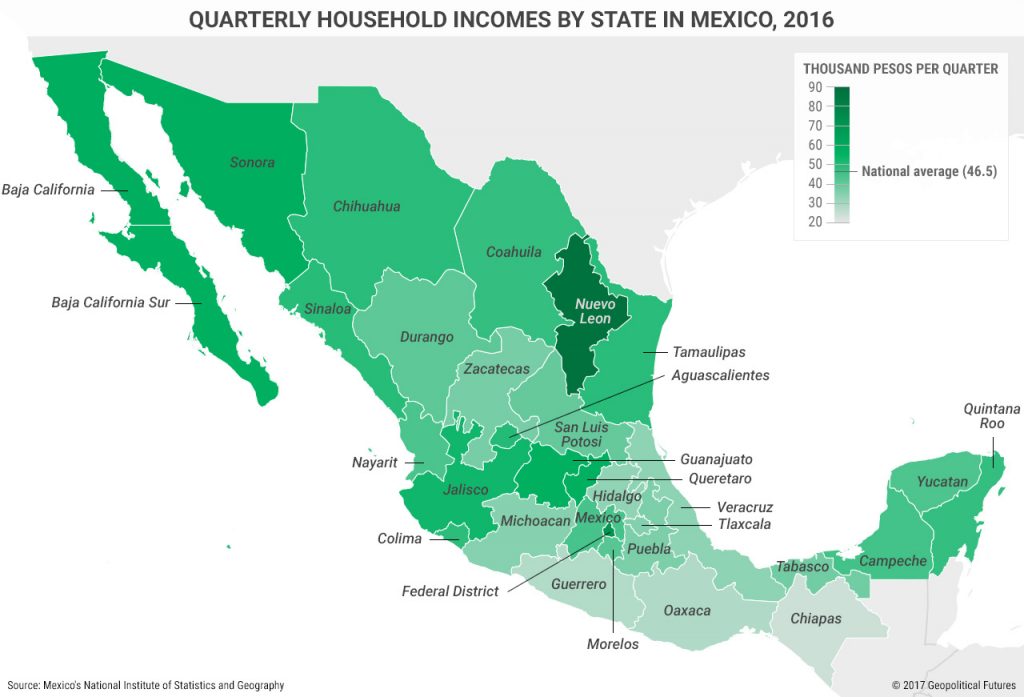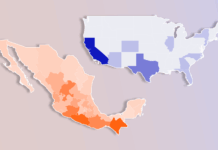The Two Mexicos are not just economically divided but geographically divided. Central and northern states typically boast more dynamic, advanced economies. Infrastructure networks – roads, electricity, telecommunication, etc. – are well developed and incorporate large portions of the population. The workforce in these states is generally higher educated, relies on formal employment, and receives comparatively higher wages. The poor, southern states have limited access to education, are often informally employed, and are paid lower wages, employed as they are generally in low-value manufacturing and subsistence farming.
A look at formal employment figures and household incomes shows how the economic activities endemic to each region contribute to economic disparity. Informal employment in Mexico is high — in August 2017, 56.9 percent of the workforce held informal jobs. However, the difference in economic activity makes informal employment much more common in the south than it is in the north. Drastic differences are also observed on the state level. Mexican states along the U.S. border account for nearly a quarter of the country’s GDP.
One of the reasons the Mexican government has never been able to reconcile the differences between Two Mexicos is that no government can reconcile a country’s geographic features. The dynamics and disparities observed in the Mexican economy today stem from geopolitical factors that have molded Mexico’s economic development. On multiple occasions, developing the central and northern states of Mexico, as opposed to the southern states, was essential to fulfill geopolitical imperatives.









